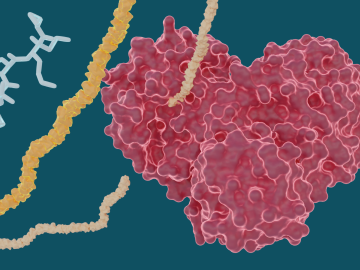
Filter News
Area of Research
- (-) Biology and Environment (31)
- (-) National Security (25)
- (-) Supercomputing (71)
- Advanced Manufacturing (3)
- Biological Systems (1)
- Computational Biology (2)
- Computational Engineering (1)
- Computer Science (1)
- Electricity and Smart Grid (1)
- Energy Science (35)
- Functional Materials for Energy (1)
- Fusion and Fission (10)
- Fusion Energy (8)
- Isotope Development and Production (1)
- Isotopes (28)
- Materials (54)
- Materials for Computing (7)
- Neutron Science (34)
- Nuclear Science and Technology (23)
- Nuclear Systems Modeling, Simulation and Validation (1)
- Quantum information Science (2)
News Topics
- (-) Advanced Reactors (3)
- (-) Biomedical (28)
- (-) Coronavirus (24)
- (-) Cybersecurity (23)
- (-) Frontier (32)
- (-) Isotopes (3)
- (-) Physics (10)
- (-) Space Exploration (3)
- 3-D Printing/Advanced Manufacturing (15)
- Artificial Intelligence (50)
- Big Data (32)
- Bioenergy (51)
- Biology (77)
- Biotechnology (15)
- Buildings (6)
- Chemical Sciences (15)
- Clean Water (11)
- Composites (5)
- Computer Science (113)
- Critical Materials (4)
- Energy Storage (12)
- Environment (106)
- Exascale Computing (28)
- Fusion (3)
- Grid (13)
- High-Performance Computing (58)
- Hydropower (8)
- Machine Learning (28)
- Materials (25)
- Materials Science (23)
- Mathematics (5)
- Mercury (7)
- Microscopy (16)
- Molten Salt (1)
- Nanotechnology (16)
- National Security (36)
- Neutron Science (17)
- Nuclear Energy (9)
- Partnerships (10)
- Polymers (4)
- Quantum Computing (20)
- Quantum Science (26)
- Security (15)
- Simulation (26)
- Software (1)
- Summit (47)
- Transportation (10)
Media Contacts

To better understand the spread of SARS-CoV-2, the virus that causes COVID-19, Oak Ridge National Laboratory researchers have harnessed the power of supercomputers to accurately model the spike protein that binds the novel coronavirus to a human cell receptor.

Since the 1930s, scientists have been using particle accelerators to gain insights into the structure of matter and the laws of physics that govern our world.

Six scientists at the Department of Energy’s Oak Ridge National Laboratory were named Battelle Distinguished Inventors, in recognition of obtaining 14 or more patents during their careers at the lab.
Oak Ridge National Laboratory and collaborators have discovered that signaling molecules known to trigger symbiosis between plants and soil bacteria are also used by almost all fungi as chemical signals to communicate with each other.

The annual Director's Awards recognized four individuals and teams including awards for leadership in quantum simulation development and application on high-performance computing platforms, and revolutionary advancements in the area of microbial

A multi-institutional team, led by a group of investigators at Oak Ridge National Laboratory, has been studying various SARS-CoV-2 protein targets, including the virus’s main protease. The feat has earned the team a finalist nomination for the Association of Computing Machinery, or ACM, Gordon Bell Special Prize for High Performance Computing-Based COVID-19 Research.

Experiments led by researchers at ORNL have determined that several hepatitis C drugs can inhibit the SARS-CoV-2 main protease, a crucial protein enzyme that enables the novel coronavirus to reproduce.

NellOne Therapeutics has licensed a drug delivery system from the Department of Energy’s Oak Ridge National Laboratory that is designed to transport therapeutics directly to cells infected by SARS-CoV-2, the virus causing COVID-19.

Scientists from Oak Ridge National Laboratory used high-performance computing to create protein models that helped reveal how the outer membrane is tethered to the cell membrane in certain bacteria.

Two staff members at the Department of Energy’s Oak Ridge National Laboratory have received prestigious HENAAC and Luminary Awards from Great Minds in STEM, a nonprofit organization that focuses on promoting STEM careers in underserved


